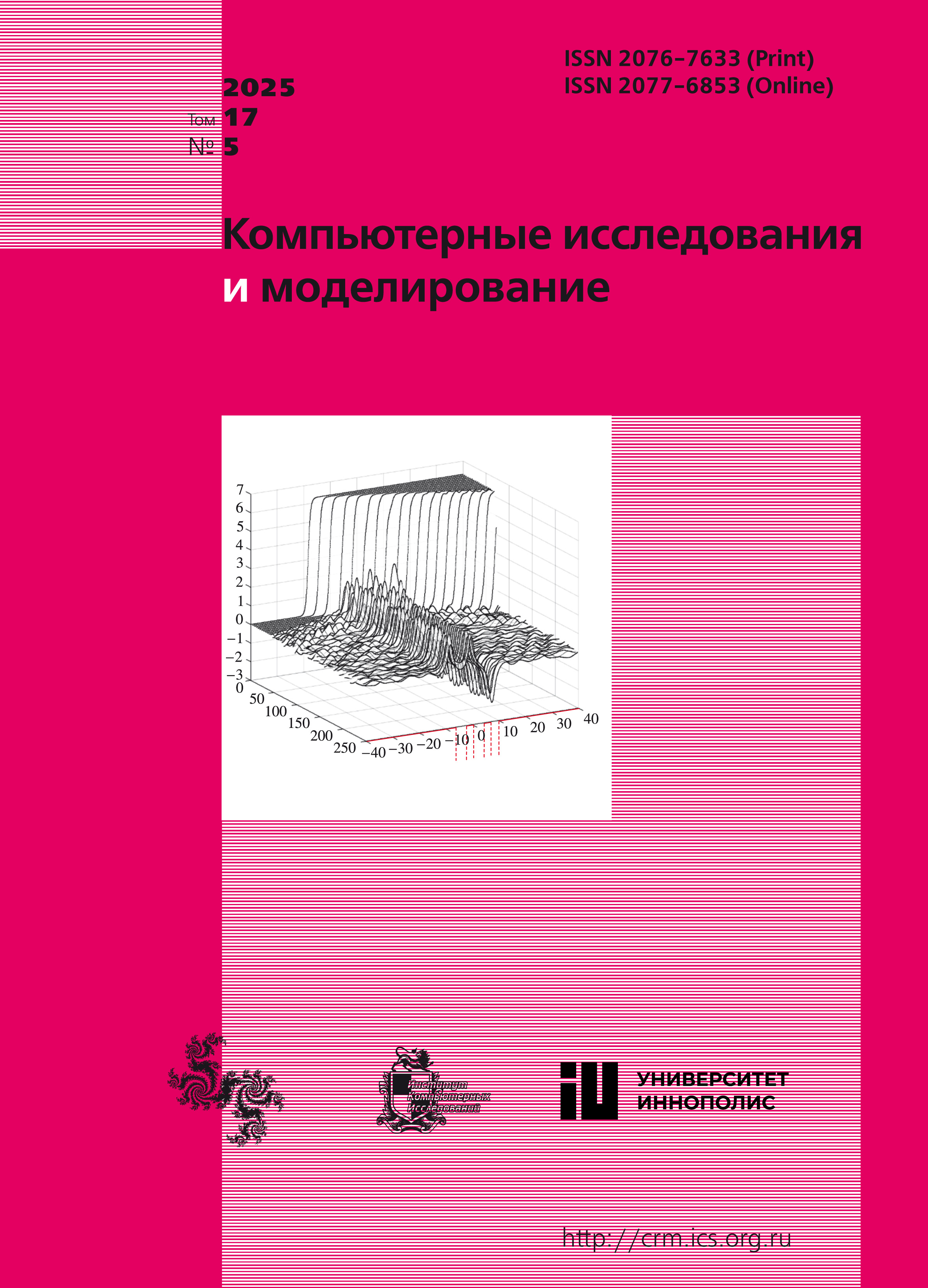Все выпуски
- 2025 Том 17
- 2024 Том 16
- 2023 Том 15
- 2022 Том 14
- 2021 Том 13
- 2020 Том 12
- 2019 Том 11
- 2018 Том 10
- 2017 Том 9
- 2016 Том 8
- 2015 Том 7
- 2014 Том 6
- 2013 Том 5
- 2012 Том 4
- 2011 Том 3
- 2010 Том 2
- 2009 Том 1
-
Computational treatment of natural language text for intent detection
Компьютерные исследования и моделирование, 2024, т. 16, № 7, с. 1539-1554Intent detection plays a crucial role in task-oriented conversational systems. To understand the user’s goal, the system relies on its intent detector to classify the user’s utterance, which may be expressed in different forms of natural language, into intent classes. However, lack of data, and the efficacy of intent detection systems has been hindered by the fact that the user’s intent text is typically characterized by short, general sentences and colloquial expressions. The process of algorithmically determining user intent from a given statement is known as intent detection. The goal of this study is to develop an intent detection model that will accurately classify and detect user intent. The model calculates the similarity score of the three models used to determine their similarities. The proposed model uses Contextual Semantic Search (CSS) capabilities for semantic search, Latent Dirichlet Allocation (LDA) for topic modeling, the Bidirectional Encoder Representations from Transformers (BERT) semantic matching technique, and the combination of LDA and BERT for text classification and detection. The dataset acquired is from the broad twitter corpus (BTC) and comprises various meta data. To prepare the data for analysis, a pre-processing step was applied. A sample of 1432 instances were selected out of the 5000 available datasets because manual annotation is required and could be time-consuming. To compare the performance of the model with the existing model, the similarity scores, precision, recall, f1 score, and accuracy were computed. The results revealed that LDA-BERT achieved an accuracy of 95.88% for intent detection, BERT with an accuracy of 93.84%, and LDA with an accuracy of 92.23%. This shows that LDA-BERT performs better than other models. It is hoped that the novel model will aid in ensuring information security and social media intelligence. For future work, an unsupervised LDA-BERT without any labeled data can be studied with the model.
Ключевые слова: hate speech, intent classification, Twitter posts, sentiment analysis, opinion mining, intent identification from Twitter posts.
Computational treatment of natural language text for intent detection
Computer Research and Modeling, 2024, v. 16, no. 7, pp. 1539-1554Intent detection plays a crucial role in task-oriented conversational systems. To understand the user’s goal, the system relies on its intent detector to classify the user’s utterance, which may be expressed in different forms of natural language, into intent classes. However, lack of data, and the efficacy of intent detection systems has been hindered by the fact that the user’s intent text is typically characterized by short, general sentences and colloquial expressions. The process of algorithmically determining user intent from a given statement is known as intent detection. The goal of this study is to develop an intent detection model that will accurately classify and detect user intent. The model calculates the similarity score of the three models used to determine their similarities. The proposed model uses Contextual Semantic Search (CSS) capabilities for semantic search, Latent Dirichlet Allocation (LDA) for topic modeling, the Bidirectional Encoder Representations from Transformers (BERT) semantic matching technique, and the combination of LDA and BERT for text classification and detection. The dataset acquired is from the broad twitter corpus (BTC) and comprises various meta data. To prepare the data for analysis, a pre-processing step was applied. A sample of 1432 instances were selected out of the 5000 available datasets because manual annotation is required and could be time-consuming. To compare the performance of the model with the existing model, the similarity scores, precision, recall, f1 score, and accuracy were computed. The results revealed that LDA-BERT achieved an accuracy of 95.88% for intent detection, BERT with an accuracy of 93.84%, and LDA with an accuracy of 92.23%. This shows that LDA-BERT performs better than other models. It is hoped that the novel model will aid in ensuring information security and social media intelligence. For future work, an unsupervised LDA-BERT without any labeled data can be studied with the model.
-
Регуляризация, робастность и разреженность вероятностных тематических моделей
Компьютерные исследования и моделирование, 2012, т. 4, № 4, с. 693-706Предлагается обобщенное семейство вероятностных тематических моделей коллекций текстовых документов, в котором эвристики регуляризации, сэмплирования, частого обновления параметров, робастности относительно шума и фона могут включаться независимо друг от друга в любых сочетаниях, порождая как известные модели PLSA, LDA, CVB0, SWB, так и новые. Показано, что робастная тематическая модель на основе PLSA, разделяющая термины на тематические, шумовые и фоновые, не нуждается в регуляризации и обеспечивает разреженность искомых дискретных распределений тем в документах и терминов в темах.
Ключевые слова: компьютерныйана лиз текстов, тематическое моделирование, вероятностныйла тентный семантическийана лиз, EM-алгоритм, латентное размещение Дирихле, сэмплирование Гиббса, байесовская регуляризация, перплексия, робастность.
Regularization, robustness and sparsity of probabilistic topic models
Computer Research and Modeling, 2012, v. 4, no. 4, pp. 693-706Просмотров за год: 25. Цитирований: 12 (РИНЦ).We propose a generalized probabilistic topic model of text corpora which can incorporate heuristics of Bayesian regularization, sampling, frequent parameters update, and robustness in any combinations. Wellknown models PLSA, LDA, CVB0, SWB, and many others can be considered as special cases of the proposed broad family of models. We propose the robust PLSA model and show that it is more sparse and performs better that regularized models like LDA.
Журнал индексируется в Scopus
Полнотекстовая версия журнала доступна также на сайте научной электронной библиотеки eLIBRARY.RU
Журнал входит в систему Российского индекса научного цитирования.
Журнал включен в базу данных Russian Science Citation Index (RSCI) на платформе Web of Science
Международная Междисциплинарная Конференция "Математика. Компьютер. Образование"






